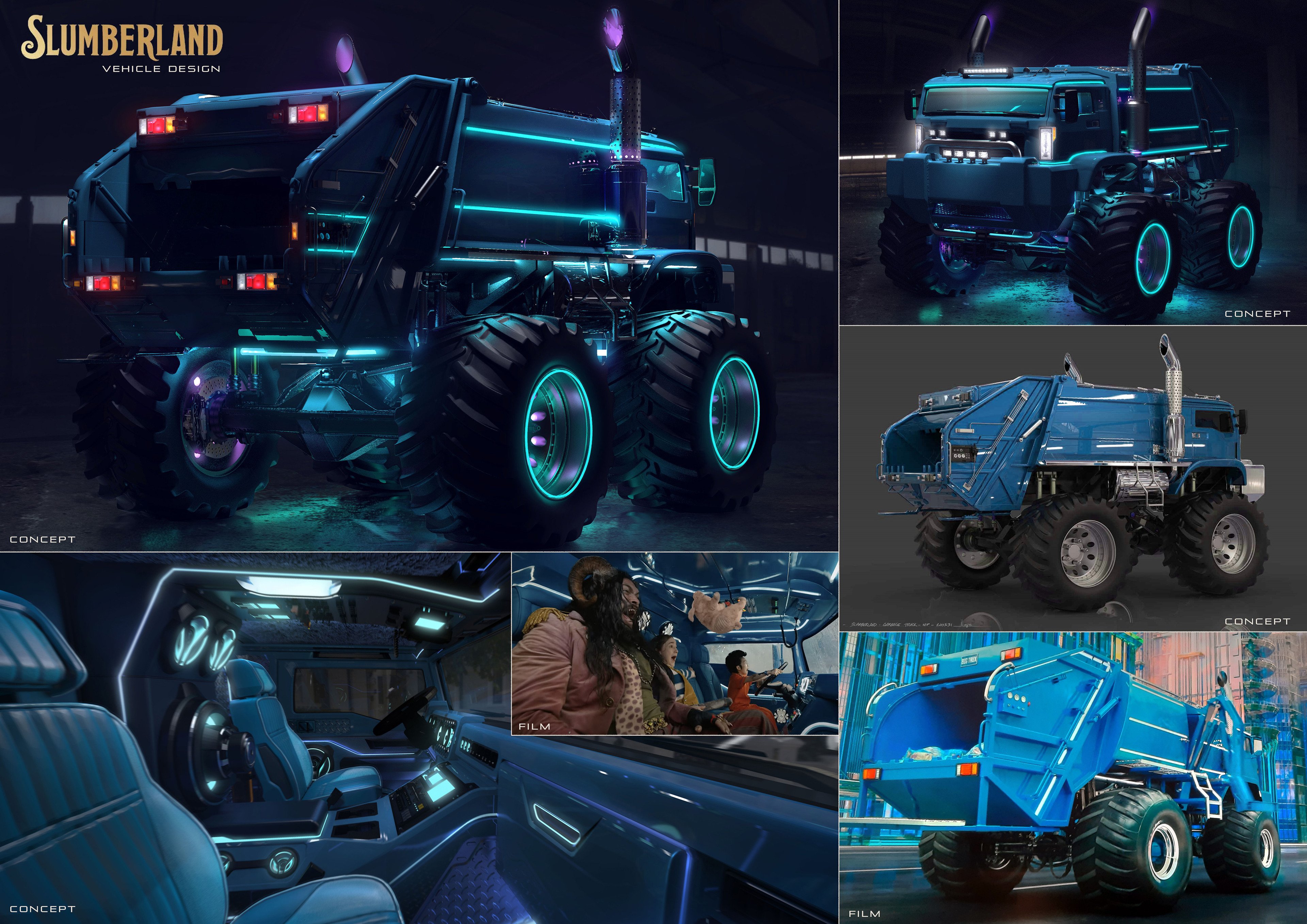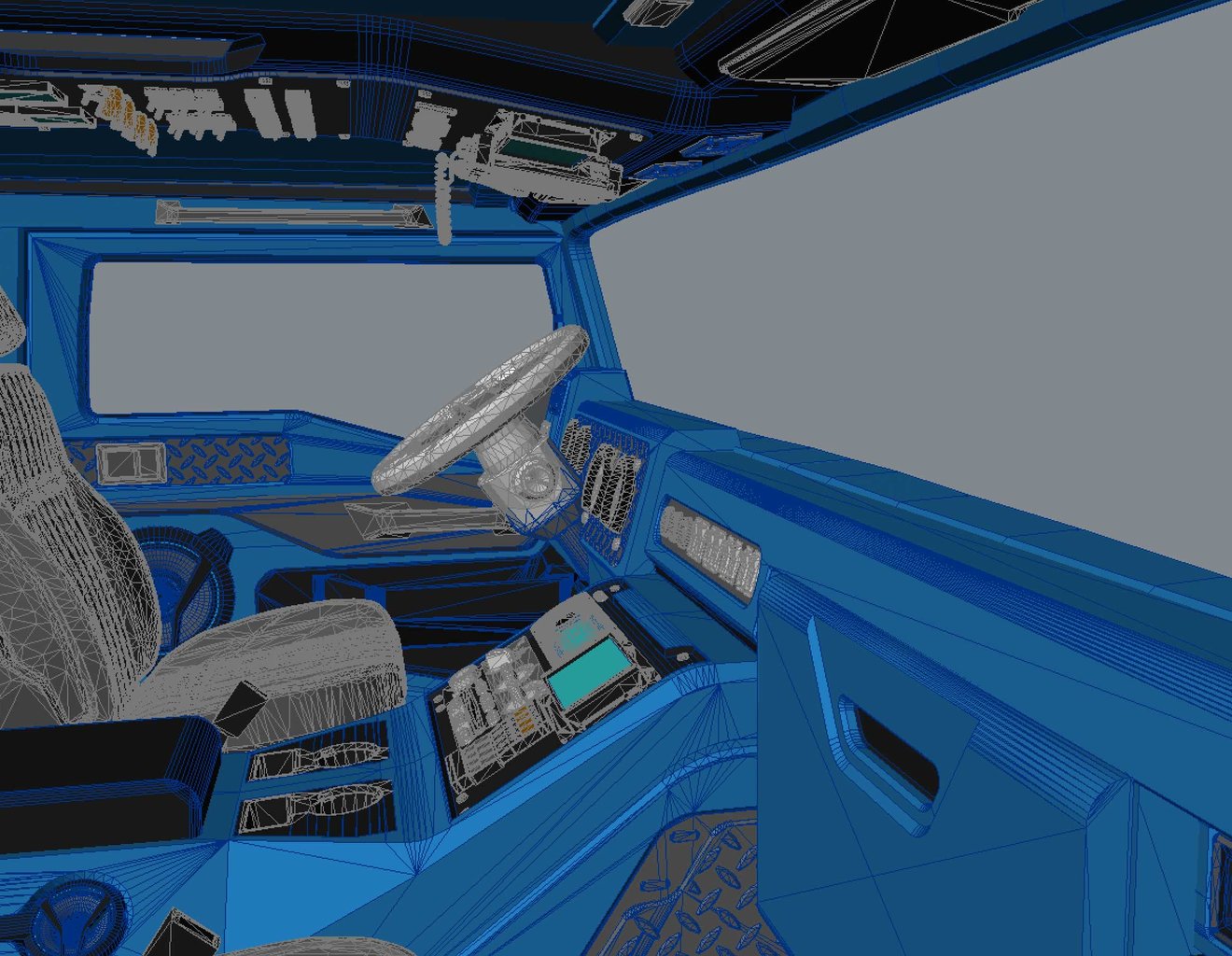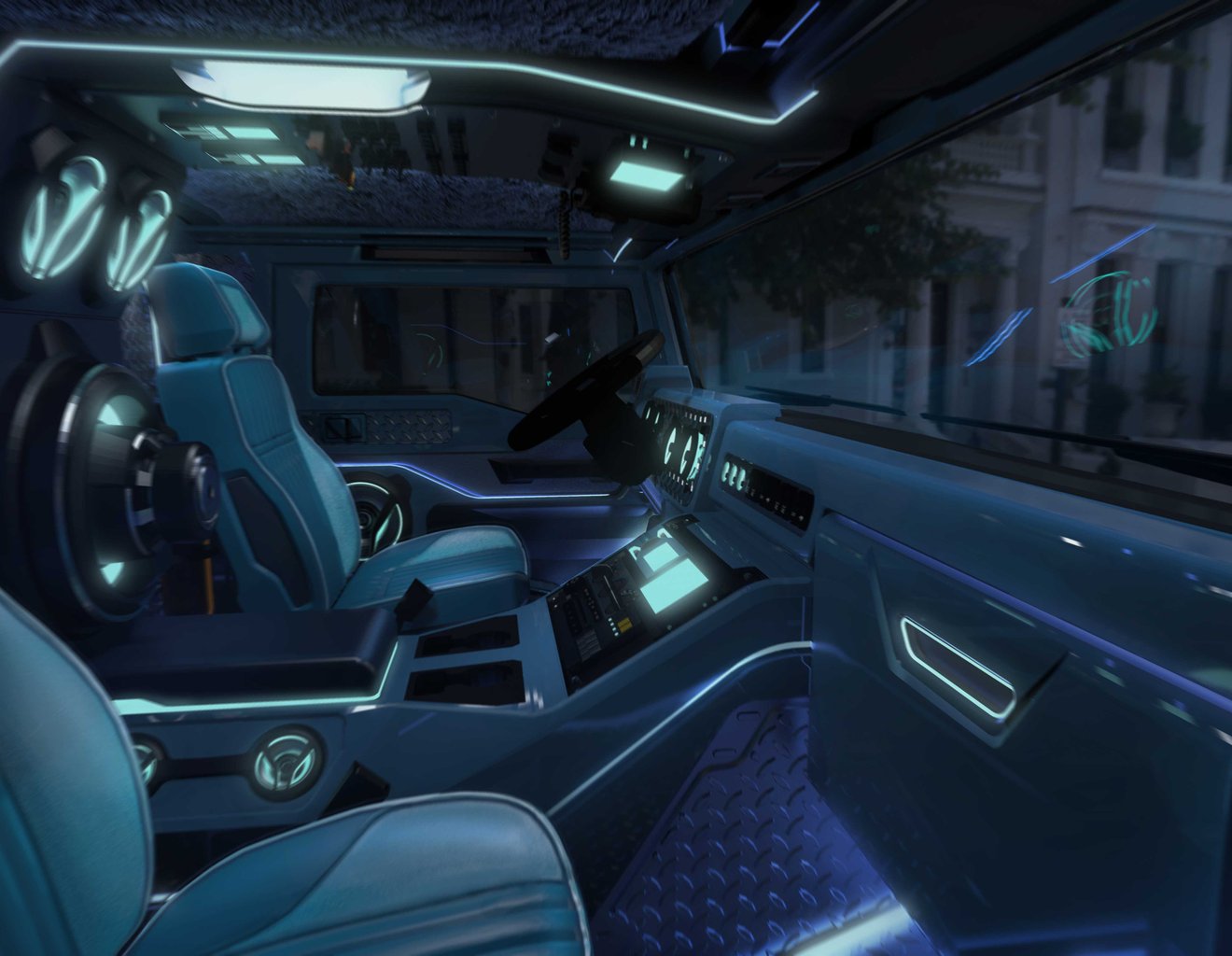
Jeremy Love
Monster trucks and Avatars
LightWave Digital: Can you tell us a bit about yourself and the work you do?
Jeremy Love: Sure thing, I'm a concept artist/designer/illustrator currently working in the film industry. It's been somewhat of a twisted path to get where I am, but I think it's giving me the skills to be a bit of an all-rounder. My role can change depending on what position is available. This is pretty common in Australia as there are only a handful of large films being made here at any given time.
On one job I could be designing and modeling props, which demands a higher level of accuracy and troubleshooting. The next job could be tackling world building and location paint overs. Also, key frames, character and vehicle design, etc. I sometimes work in game development and book illustration too, which has another design pipeline with its own restraints and freedoms.
Working in so many disciplines requires knowledge in a range of software, each suited to a particular task, which I guess in the end makes me more hireable for longer periods throughout the production process.
LD: When did you first get into using Lightwave 3D?
JL: I started my creative career as a graphic artist in 1995, yikes!... which then led me into signwriting. During this time, I was also moonlighting for a video production company creating 3D moving graphics for commercials and documentaries.
This was my introduction to LightWave 5.0, which was perfect for animating flying logos. I then started playing around with animating basic characters. First with rigid IK then onto boned mesh and target morphs. I usually learn on the job, which isn't always the best approach. I jumped right into creating a two-minute animated intro for a children's film. This was still while working a full-time day job, signwriting and definitely not my best work! I think I had upgraded to LightWave 6.0 as my trusty companion was a, now battered, instruction manual by Dan Ablan.
At the time I was working on a laptop, so progress was slow. This wasn't helped by my complete lack of experience, so my meshes were way too dense, causing a two-pronged headache... awful deformation and painfully slow rendering times. I would recommend learning the tools and developing a good process thoroughly before diving headfirst into a large project! I managed to finish the job so the clients were grateful, but I had unfortunately burned myself out on anything 3D-related.
It was shortly after this that I changed direction away from 3D and became obsessed with 2D illustration. I was hugely inspired by a seminar given by Feng Zhu while attending the 2003 3DFestival in Copenhagen. From that point, I didn't use any 3D software again until 2017. This was with Zbrush, which I learned on the job while on the Aquaman film. It appears I never learn! However, being more experienced in the industry, this had a positive outcome, which reignited my interest in 3D modelling. So, while in Wellington on the Avatar sequels in 2018, I started using Lightwave 3D again. The hard surface design aesthetic of the RDA tech, was perfectly-suited to polygon and NURBS modeling. The Matador cockpit is a good example of this.
My process would be to sketch out some 2D concepts in Photoshop, and then model the final version in LightWave. I also used Moi3D for CAD modelling until I discovered LWCAD. There were a few limitations to LWCAD at the time but I'd like to revisit it at some point. LightWave 3D will always hold a feeling of nostalgia for me as it was my first step into the 3D world. It's a powerful package and I hope it stays for the long run.
LD: Do you have a favourite tool or Function in LightWave 3D?
JL: For me it was always the large, uncluttered workspace and the separation in programs between Modeler and Layout. There are no flashy icons, just all the space to create.
Slumberland monster truck wires and final


LD: Can you tell us a bit about some of the productions you have used LightWave 3D on?
JL: I used LightWave a fair bit while working on the Avatar sequels which started in late 2017 and ran until late 2019. More recently, I was asked by Production Designer, Dominic Watkins, to design the ‘Hotrod Dumpster’ in Netflix’s ‘Slumberland’ film.
The truck’s design had a lot of straight panels and there ended up being a lot of parts. I needed to keep the poly count under control so LightWave was perfect. Once the concept model for the exterior and interior were complete, it was handed off to the set designers who made it buildable. The final truck was at 1:1 scale and fully drivable. They did a great job with it.
LD: Did you say that the models you created for Slumberland were actually turned into real vehicles? It wasn't just CG onscreen?
JL: That’s right, the set designer took my concept model and used it as a base to build their fabrication model, which was used to engineer a fully-drivable vehicle. I think they modified an actual monster truck chassis and dropped in a 525hp LS3 Chevy engine. I was surprised to see how close it all looked to my initial design. I remember it had to be something a kid would find cool enough to dream about driving. Hence all that chrome and neon - it was a fun project.
LD: Do you have a project of which you’re most proud?
JL: It’s pretty hard to top Avatar, and I consider myself extremely lucky to have been invited to be a part of it. The calibre of the artists was incredible.
However, working on Aquaman was a fantastic experience. Production Designer, Bill Brzeski and Director, James Wan, gave me so much freedom to just go for it with ideas. My feedback would often consist of “great!, keep going!”, So I did!
I’m proud of the work I did on the Fisherman Kingdom, as it came from pure exploration and imagination. In particular, the Princess’s ‘Prawn Fighter’, which was a vehicle I developed in the hopes it could be used as a background element. James loved it, so it ended up being a hero vehicle. It's quite usual for me to look at old work and shudder a little, but I still like the work I did on Aquaman.
Other projects I'm especially grateful to have worked on are 'Voyage of the Dawn Treader', which was my first film. I was a fan of the books as a kid so I couldn't believe I was contributing to the Narnia legacy.
LD: What did you work on in Voyage of the Dawn Treader?
JL: My film career kicked off in the Set Decoration department, so my role on the Dawn Treader consisted mainly of designing props and furnishings. So basically lanterns, tables, chairs, beds and boats, you name it. Anything that couldn’t be found or bought, had to be designed and fabricated. All of my work at that point was created in 2D, so the craftspeople did a great job interpreting my drawings. I’d often get requests for the 3D files I’d used, so would have to say I didn’t have any. I realised that it was time to add 3D into my workflow.
+
LD: Hence LightWave. You’ve also contributed to the legacy of other franchises, right?
JL: Yes. 'Alien Covenant' and 'Dead Men Tell no Tales' were other films that I felt the same way about. Also the Nautilus TV series. I'm a huge fan of 20,000 Leagues Under the Sea. It definitely makes it more fun if you love the content.
LD: Are Dead Men Tell no Tales" and "Pirates of the Caribbean: Salazar's Revenge" the same film? I loved Javier Bardem's cracking skin in that one.
JL: Definitely the same film but I did wonder the same thing regarding the two titles. I’m guessing it has something to do with marketing and how it translates into different languages. Perhaps because Javier Bardem is a Spanish actor, they focused on his character for European releases. It’s shorter that’s for sure. The artists at Odd Studio did an amazing job with the ghost makeup and prosthetics. I collaborated with them recently on the upcoming Voltron film. Adam [Johansen] and the team really do fantastic work.
LD: What advice would you give to aspiring 3D artists?
JL: I guess I'd go back to what I mentioned about developing a solid process. With 2D illustration, it's all about learning the fundamentals first, which gives the artist a solid foundation to build on. The same can be said for 3D.
I always had a tendency to get excited and over-ambitious, rushing in to tackle a huge project. It's true that I learned a lot doing this - but I also learned a lot wrong, which wasted time. I would have been wiser to first try something more achievable. It's tricky when self-learning, but you'll have fewer headaches if you master one thing at a time.
If you can make something quick and cool with the basic tools, you'll keep the enthusiasm to push further and try more challenging projects down the line. The confidence that comes with instinctively knowing your software will allow the creativity to flow more freely. You'll only get faster and more confident, avoiding burnout. So give yourself a break and take your time.
LD: Lastly, I've had a lot of people tell me that modelling in LightWave feels a lot more like sketching than it does in other 3D apps because of the immediacy of the way Modeler does stuff. Is that how you feel about it?
JL: LightWave has that feel about it for sure. I use a [Wacom] Cintiq, so the tablet mode is a bonus. Using a mouse for 3D apps gives me RSI pretty quickly plus I’m much faster with a pen. The way Modeler is set up is conducive to working quickly, which is great when things are flowing. LightWave responds as fast as I can input and still asks for more.
Go and see more of Jeremy's excellent work here.















